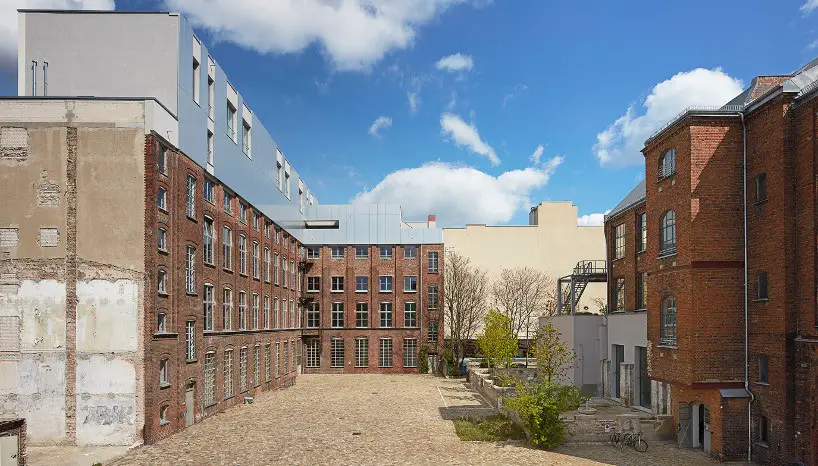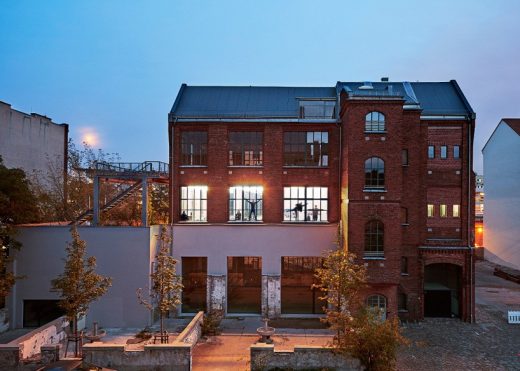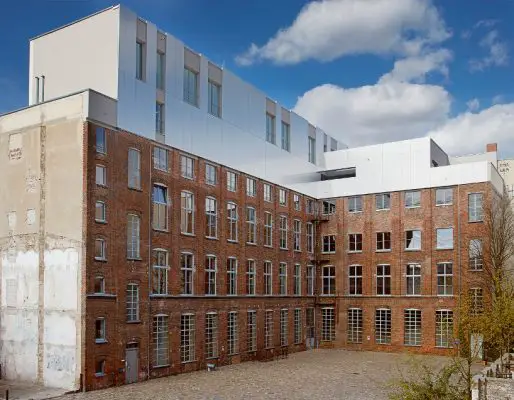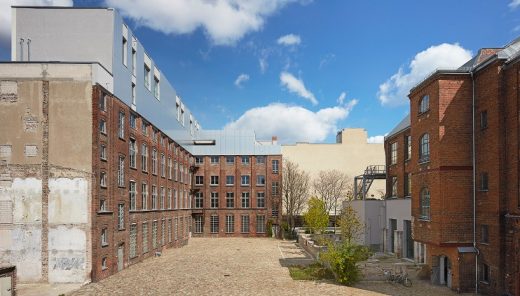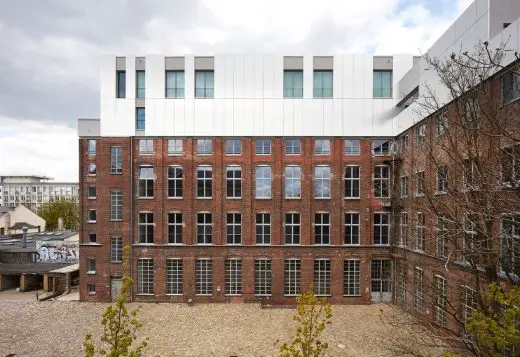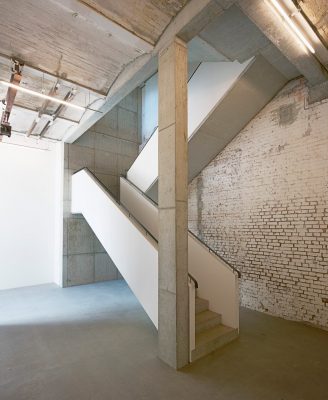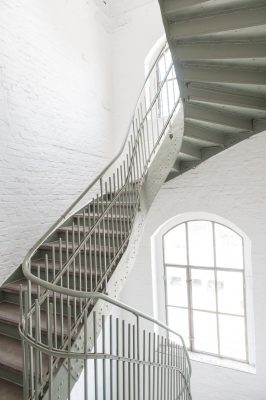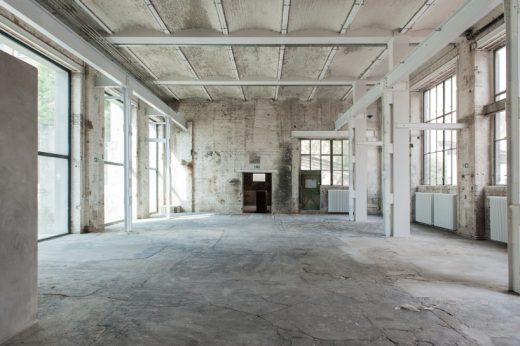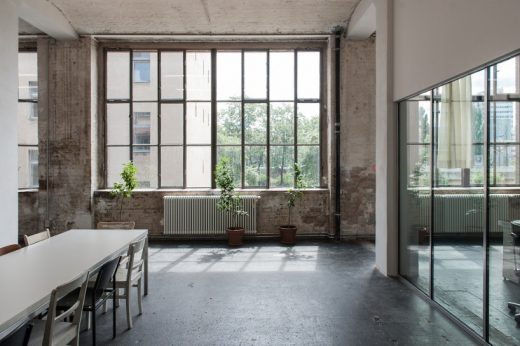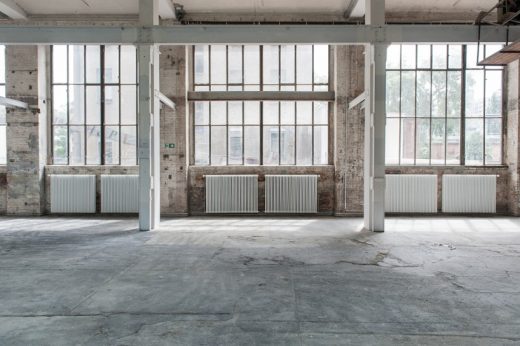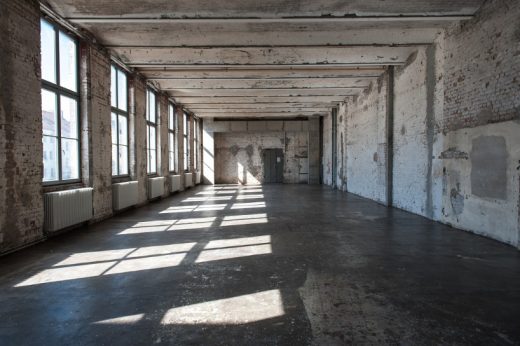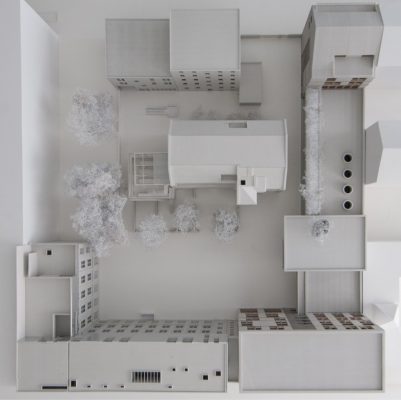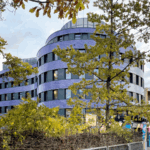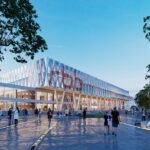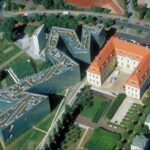Lindower 22 Berlin Building, Max Hasse Maschinen Fabrik Architecture News, Interior
Lindower 22 Berlin Building
New Cultural Architecture in Wedding District, Germany – design by Heim Balp Architekten
18 June 2019
Lindower Strasse 22 Berlin Building
Location: former Max Hasse Maschinen Fabrik, Wedding district, North west Berlin, Germany
Lindower 22 Berlin Building
Design: Heim Balp Architekten, DE
Lindower 22 project conceived and designed by Heim Balp Architekten as a cultural project organized in the abandoned industrial compound of the Max Hasse Maschinen Fabrik, in the Wedding district North west Berlin.
External photos: Nick Ash
INTRO
At the time of the Berlin Wall, the west-north district of Wedding was a working-class area of West Berlin in the French sector that had lived through the decline of the early 20th Century industries and the economic crisis following the isolation of Berlin as an enclave within the GDR.
As a result, Wedding saw a drastic decline in population that allowed the settlement of a large number of migrant workers. This cultural mix is still its main character nowadays.
Until a couple of years ago, Wedding seemed to remain impermeable to the big urban development rush that the city has being undergoing first, after the Wall came down, and then, even more consistently, since the early 2000s.
It was only after that the gentrification process saturated other comparably central districts like Kreuzberg and Neukölln, bringing leases to an ever maximum height, that things started really changing for Wedding.
Thanks to the availability of affordable residential spaces, and to the architectural quality of its industrial heritage, the area has attracted in recent years an increasing number of artists, art galleries and creative ateliers; several new cultural venues and art projects grew from the ashes of the abandoned production facilities.
The local city planning has concurrently implemented an urban regeneration program for Wedding focused on the uplifting of the public realm, that together with the city’s policies aims to protect the current fabric, creating so far the conditions for a balanced growth.
Today Wedding is considered a very lively, multicultural district having half of its population an immigrant background, still with a major potential for growth, and thus playing a central role for the future of Berlin’s architectural and cultural development.
LINDOWER 22 the project
The Lindower 22 project has been conceived and designed by Heim Balp Architekten & Asastudio as a cultural project organized in the abandoned industrial compound of the Max Hasse Maschinen Fabrik, formerly dedicated to metalworking and the production of machines and safes.
The project encompasses the conversion of more than 6,000 sqm of existing buildings with the focus on creating spaces for art production and exhibition, as well as the construction of further 5,000 sqm of mixed-use buildings in a narrow and very long plot of land to the side of the property.
The program includes 27 residential units, a small theater or performance space, ateliers and at street level several commercial activities, bars and restaurants.
Lindower 22 is designed to become an urban cultural think tank, a space for free thinking and for knowledge exchange, keeping up with Berlin’s free spirit and open attitude.
When completed, the project will become an experimental district where artists, researchers, start-ups, cultural associations, fashion designers, art galleries, and small contemporary artisans can get together as a community and influence and inspire each other, generating a hybrid hub that grows and develops together with the district of Wedding and the city.
During the first phase (from 2014 to the end of 2018) the existing buildings have been renovated and the cultural production has recently started with rehearsals, art production and exhibitions in gallery spaces,
performances.
As Pietro Balp and Michael Heim explains, “The way we approached the project, is focused on reducing the interventions, yet evident, to the minimum required: The result are bare and clear architecture spaces which do not require any iconic statement. An architecture that rewrites on history instead of wiping it out”.
Internal photos: Andrea Garzotto
LINDOWER 22 HAUS A
The 4-storey L shaped building is the largest building of the complex, as it hosts spaces for the art production and exhibition, as well as residential units and a private collection.
The HAUS A refurbishment project has focused on two mainly interventions : the two-story rooftop extension, cladded in reflective brushed metal panels, which clearly differentiates itself from the original architecture, and the introduction of a new concrete stairway which provides the required fire safety for the new uses, becoming the new main public access.
“The new stair is the most evident alteration of the existing architecture, yet it belongs here and shows the respect for the original structure by detaching itself from it with a 4 cm gap” as architects underline.
All new refurbishment interventions are made evident by the white colour or by the sincerity of the materials, clearly stating where the boundaries between past and present lie.
LINDOWER 22 HAUS C
Renamed ‘the Cathedral’, as it is freestanding in the middle of the courtyard, HAUS C is a four-storey building with very large windows, that make it extremely trasparent.
Exhibitions activities are located in the ground floor spaces, where the the traces of the 20th Century addition are preserved, in order to structure a sculpture garden for the inner courtyard.
Offices and worksplaces are located on the upper floors – HeimBalp practice offices are on the first floor, workplaces on the second- where two new green terraces have been built on top of the one non original addition preserved; the third level has been converted in a loft residential unit. The red brick facade has been preserved and purified from further addictions, emphasizing a crucial drive of the whole design intent.
“Every element that was still able to operate, has been put back to work, adding and updating only where strictly necessary. The consequences of this – let’s say – ethical approach, is an apparently unfinished aesthetic, that well allows to understand the building history whilst preserving its aura as highlighted by the architects”.
LINDOWER 22 HAUS D
HAUS D is the front street portion of the entire complex, consisting of an existing residential building now refurbished, and a new one with four apartments, along with a small store to become a library on the ground
floor.
This part of the project helps the transition from the industrial core of the property to the street, where the residential buildings are located. The new building has been kept on purposely lower than the building code allowed, in order to bring more light from the south side to the courtyards.
LINDOWER 22 HAUS B
With delivery forecast in 2021, the construction work for the last portion of the entire complex is ongoing. This last phase of the project will provide HAUS B, a mixed use new building (3800 smq).
The HAUS B project is conceived as a multiple culture expression place housing a theatre, a delicatessen, along with art ateliers and galleries, artist residency and shared places.
The volumes, the heights as well as the facades of HAUS B, are designed so as to maintain an accurate formal and historical continuity with the existing architecture of Lindower Strasse 22.
Lindower 22 Berlin – Building Information
Address: Lindower Strasse 22, 13347 Berlin
Architecture: Asastudio & Heim Balp Architekten
Design team: Simone Matteazzi, Claudia Große-Hartlage, Simone Martini, Andrea Garzotto, Lorenzo Gentili
Client:
Kondo GmbH (HAUS A)
Kondolin GmbH (HAUS B+D)
LIND 22 GmbH (HAUS C)
Programme: Ateliers, Workspaces, Exhibition Spaces, Auditorium, Apartments, Gastronomy
Chronology:
Phase 1 (HAUS A+C) 2014-2018
Phase 2 (HAUS D+B) 2018 -2021
Total surface: 11.000 smq GFA
Consultants:
Structures – Ingenieurbüro Mühler
Mechanical and Electrical – Ingenieurbüro Duba
Acoustics – ABIT Ingenieure
Energy Plan – Lossen Ingenieure
Fire Protection – Lossen Ingenieure
Construction: Bauunternehmen Henning Große
Facades: GIP Glazing
Photography: Andrea Garzotto, Nick Ash
Renderings: Asa studio
Lindower 22 Berlin Building images / information received 180619
Location: Lindower Strasse 22, 13347 Berlin, Germany
Berlin Architecture
Berlin Architecture
James Simon Galerie, Museum Island
Design: David Chipperfield Architects
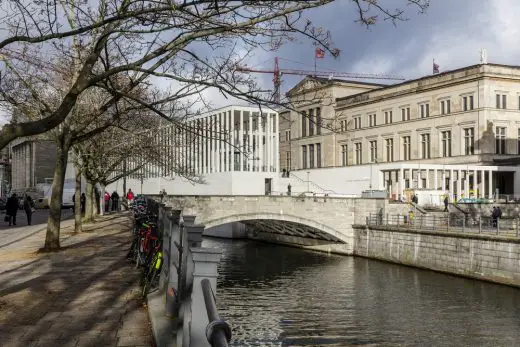
photo © Ute Zscharnt for David Chipperfield Architects
James Simon Galerie Berlin
Futurium
Design: Richter Musikowski Architekten
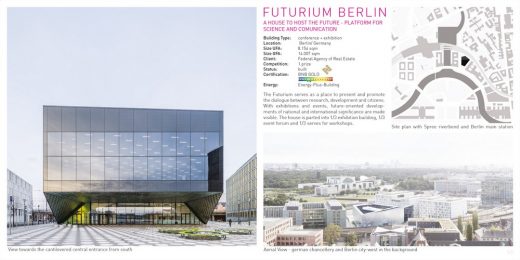
photo : Schnepp Renou, Dacian Groza
Futurium BERLIN
Arcs and Squares Housing, Mitte
Design: TCHOBAN VOSS Architekten
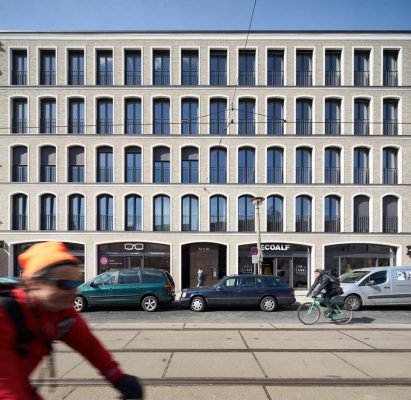
photo © Nils Koenning
Arcs and Squares Housing
Comments / photos for the Lindower 22 Berlin Building page welcome

